Going Distinguished: Experiences of a Fellow Rifleman
February 9, 2022
Civilian Marksmanship Program▸The First Shot▸Going Distinguished: Experiences of a Fellow RiflemanBy Adam S. Jones, Distinguished Rifleman #2548
This article is dedicated to the memory of the author’s father, Donald E. Jones – “a kind, dear man.”
Make no mistake, there is much improvement I am excited to pursue, so what follows is not advice from a record setter or one of the Zen Masters. I simply wish to contribute to this culture as others have done before me and pass along some things that benefited me. Also, what follows will be a blend of what was shared with me, thoughts from Raymond Prior who authored Bullseye Mind (if you haven’t already, read and savor this book!), sessions with an excellent cognitive therapist, good reading and what seems to add up and follow from experience.
I went Distinguished this past September – a journey that was seven years in the making. The fact that it occurred is a testament to the generous and encouraging culture of the highpower rifle community. Is there another sport where one’s competitors go out of their way to encourage and instruct you in hopes you improve?
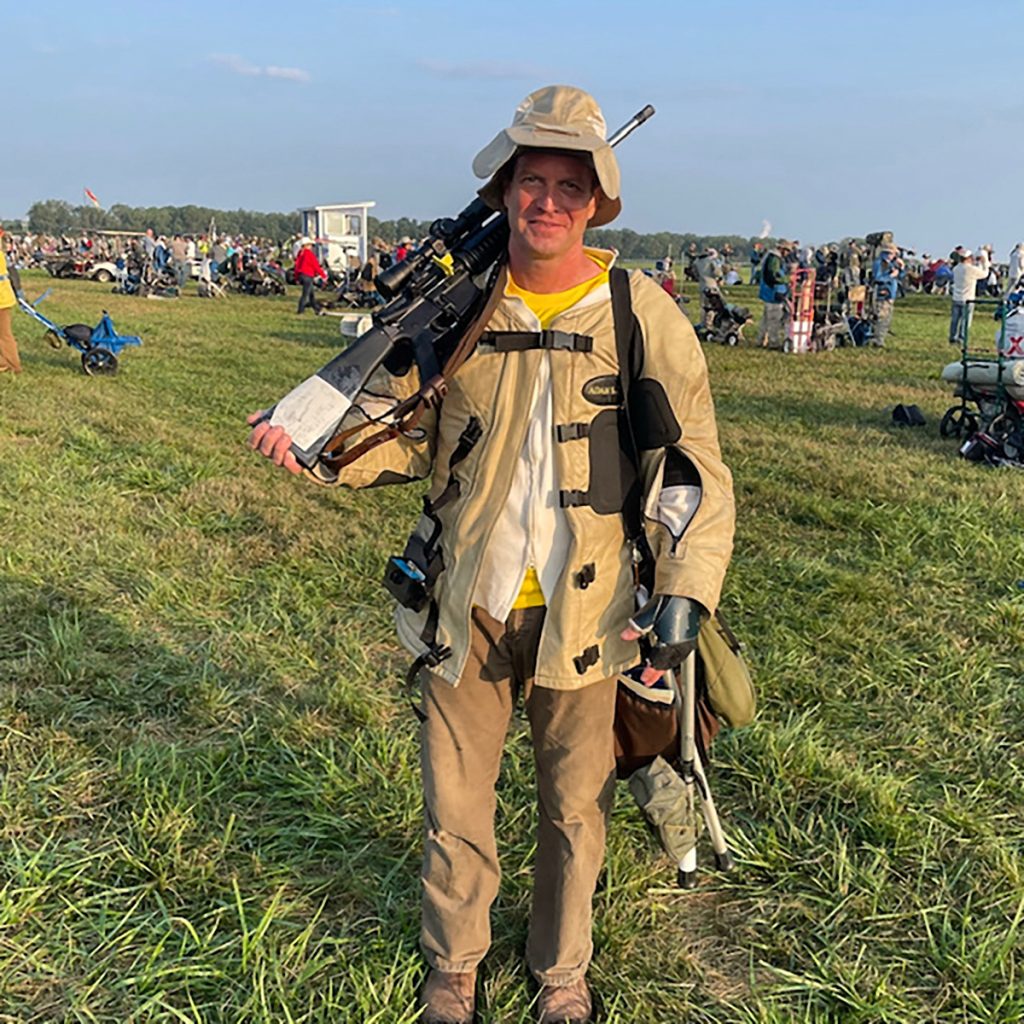
I could not begin to calculate, let alone properly express gratitude for, the time and effort others have provided. Strangers on Viale at Camp Perry offering observations on the line fresh after a string of fire; experiential knowledge shared through casual conversation in the pits, the parking lot or online; phone conversations with friends; mental management suggestions; equipment corrections; reloading improvements and on and on. A local friend and excellent rifleman even commuted an hour to coach me during live fire in 35-degree weather, not having trigger time for himself. And, of course, there was the loving support of my wonderful wife and daughter who could see the benefits competitive rifle was providing for me.
And let’s remember the timely encouragement to persevere and press on!
I am delighted to say that the long trek blessed me with life-enriching friendships that would not have occurred if I would have been golfing all those years. The cast of characters at these matches are largely an intellectually curious, gracious and fun bunch, and my close associations with some of them have broadened my horizons far beyond rifle marksmanship.

Related, the daily life benefits from what I’ve learned through highpower rifle competition have proved invaluable (Hold hard and favor center!). The effort to manage match nerves dovetailed with a real-life effort to manage anxiety, cognitive training and mental health – and the benefits have been beautiful. My relationships with our young daughter, my wife, family and friends have deepened, and I say with unflinching certainty that I am a happier, more centered person because of this weird desire to travel long distances at considerable expense to more efficiently punch the middle of paper targets from 200, 300 and 600 yards.
So, I am delighted to say I went Distinguished as the effort to do so brought upon so many unforeseen blessings and benefits while meeting a challenging goal. Looking at the badge (and the tattoo on my forearm) reminds me of all those benefits and all those faces, challenges and good times.
I am at the same time humbled, as there were many face plants during that journey, specifically two times over seven years when I was oh-so-close to tucking my tail and quitting. (I clearly recall sitting on the porch of an isolated cabin somewhere near Malvern, Ohio, on the Friday night after the 500 aggregate at the Buckeye Blossom in 2020, before the double EIC weekend, watching the squirrels and pondering how much money I could rake back if I sold all my stuff online.) Also, it is humbling because I see how much more growth and improvement there is ahead of me, that the Distinguished Rifleman Badge is really a starting point, not an ending. And that is a good thing.
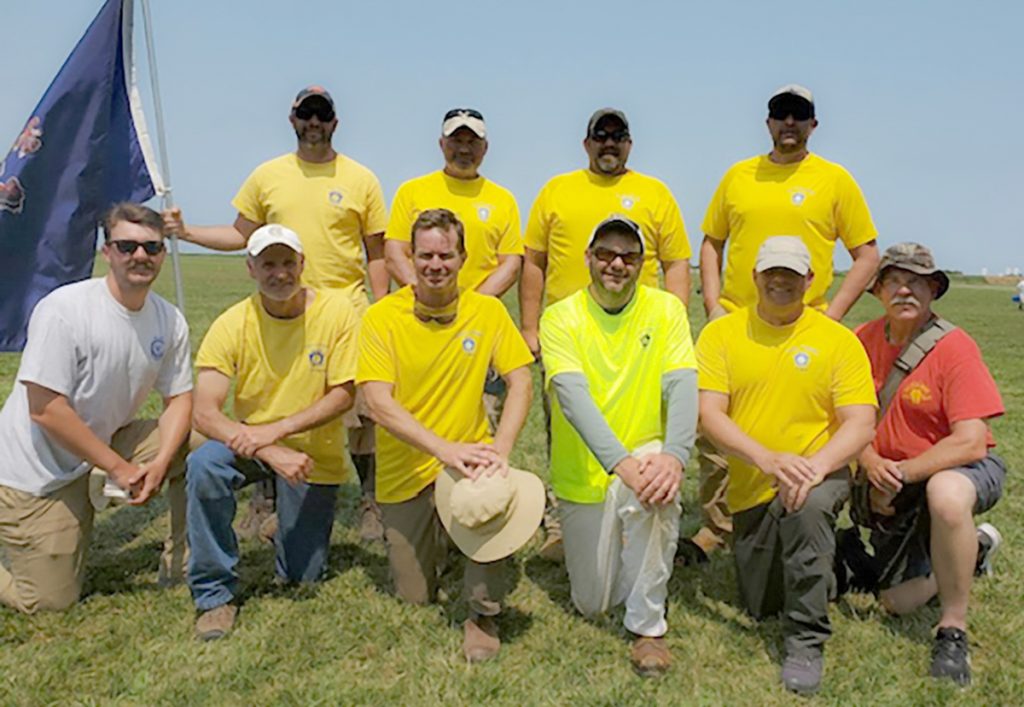
In consequence of being the beneficiary of this uniquely gracious community, I feel happily obliged to pass along what others have shared with me in hopes it assists at least one fellow competitor and, in turn, gets passed along by them to others. Everyone is different with their own challenges and solutions – my biggest challenge was (is!) match stress, nerves, Match Monkey, knee-high-wind, whatever we label it. So, most of what benefitted me is listed below.
- Neuroplasticity: the wonderful neurological news that no matter our age or life circumstances, our brains have the ability to construct new neurological pathways. That is, we can create new habits and automated responses with time and cognitive training. We can train our brains.
- Perception is vital. View a match or any part thereof negatively or as a threat of any kind, the primordial part of your brain lights up and guess what it feeds your body? Adrenaline. View a match as a competitive challenge and opportunity to improve marksmanship and the problem-solving and creative portion of your brain lights up and increases the probability of managing match stress constructively – guiding that energy towards good ends through focus and execution.
- Set your expectations in reality and history, not your hopes and dreams of having no match stress. If we do the former, the good brain processes engage. If we do the latter, the fight or flight instinct lights up if the stars don’t align and Match Monkey returns.
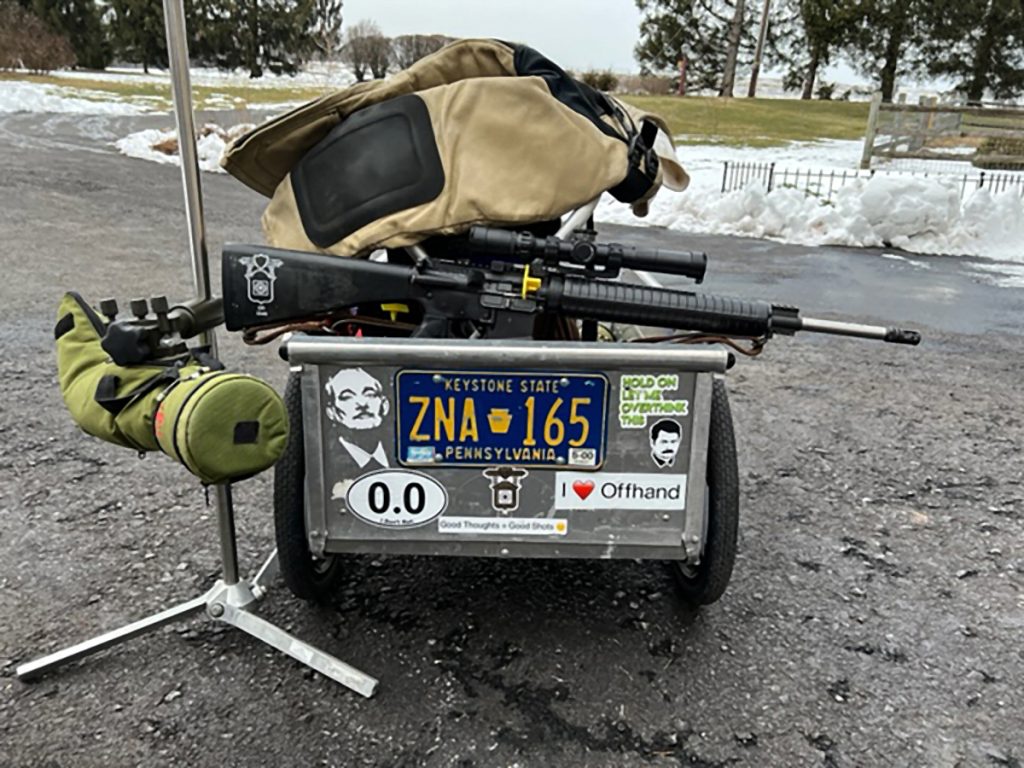
- Focus on the Do’s, do not focus on the Do Not’s. That is, as a young Marine shared with me between the 200- and 300-yard lines at Butner, “Focus on the solution, not the problem.”
- Related, if someone told you to not think of a pink elephant, what image would be in your mind? A big pink elephant. Similarly, if we think of not crossfiring, not shooting a miss, not repeating a 7, etc., where are our minds focused? And what precedes actions? Thoughts. When thinking of shooting, only think about breaking clean center shots. If your mind regresses to thinking of bad shots, think of shoelaces, maple syrup, song lyrics, the color blue – anything else. (This is obviously important on the range but is equally important off the range, anytime and anywhere. I often think of shooting while driving and, of late, I think of two particular X’s I called in offhand and everything came together.)
- When match nerves or distractions occur, stop, focus solely on your breathing (deep belly breath in through the nose, out through the mouth). Think about how it feels, sounds, thinking only of your breath. Refocus on your shot routine and re-engage the target, thinking of the sight picture just before shouldering your rifle. Someone called this, “Break the Loop.” My therapist calls it, “Thought stoppage.” Match stress comes from thinking of being in a match. Thinking of something else (breath is good because it oxygenates your blood) momentarily rests the mind from the immediate stressor. Or, zone out staring at a tree or the patch on the back of the competitor next to you – it’s contour, color, how you would shade it in if sketching it, whatever.
- Be optimistic. Optimism is not some delusion that everything will be peachy and there will be no challenges. Optimism is expecting challenges to arise and then actively engaging them as opportunities, not problems to avoid. (Another book recommendation: Learned Optimism by Martin Seligman)
- Related, think of a thermometer and a thermostat. A thermometer passively takes in the prevailing atmospheric conditions and reflects them. That is, a thermometer is controlled by prevailing circumstances. A thermostat, by contrast, actively sets the temperature and humidity, and the room’s conditions are changed. That is, the thermostat actively controls the prevailing conditions. Be the thermostat and take control of your thoughts.
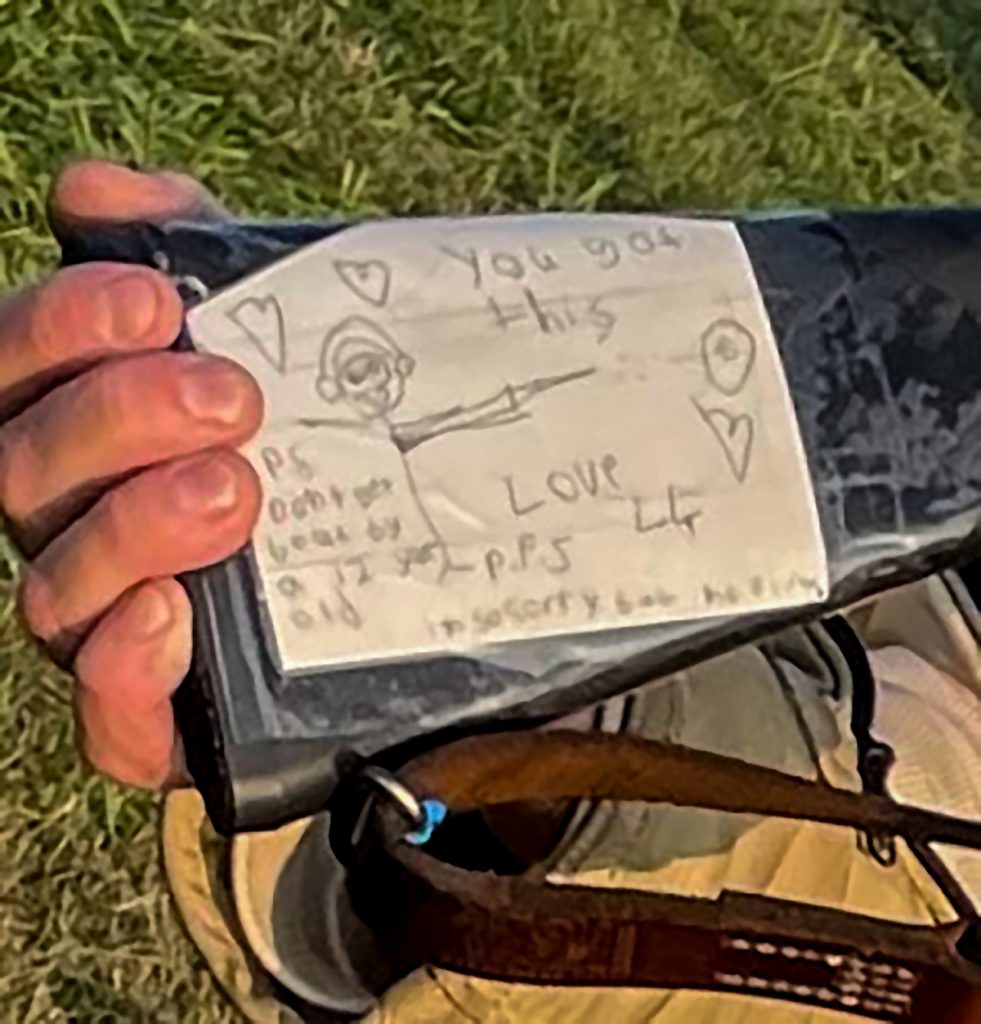
- Thoughts are mental events. The events we create in our minds affect our bodies. We also have control of our thoughts (not the other way around, à la thermostats). And we have the choice to control our thoughts or allow circumstances to control our thoughts. So, we can choose to control our thoughts that control our actions.
- Work with it, not against it. Or, the act of trying negates itself. Fighting against negative thoughts compounds their negative effect. Expect negative thoughts to crop up from time to time. It is natural. Then, let them go like unwanted guests at a dinner party letting themselves out, then re-engage good thoughts and processes. Good thoughts = Good shots.
- Related, when a bad shot occurs or old negative thoughts appear, view their occurrence with non-judgement. “Okay. That happened. I’ve been here before. Time to move forward.” Practically speaking, if we beat ourselves up, we decrease the likelihood we will move forward constructively and return to a mindset conducive to good shot routines and breaking clean shots. Want to shoot better after a bad shot or a negative thought crops up? Be kind to yourself.
- Be mindful of setting up a healthy, constructive “If, then” mindset. What to do: “If I perform below expectations, then I will continue to have a positive relationship with this sport I voluntarily signed up for because it is fun.” What to avoid: “If I shoot well, get leg points, meet my goals, etc., then I will be happy.” This mindset will likely put you on the fast track to disliking a sport we got into because it is fun. (And you’ll miss a lot of good times and good people along the way.) Of course, we want to excel and improve our scores. To do so, it is more practical to not get wrapped around the axel when that does not occur.
- Every match is an opportunity to improve marksmanship and practice for the next match. Each match is a means to performing well in the next match. To build a wall of bricks, you install one brick at a time – going up each time, building upon the prior bricks.
- Winning matches, peer approval, earning a shiny little badge, etc., should be secondary things. Improving your craft, enjoying the sport and maximizing your time around good people should be primary things. Of course, we desire the secondary things as they are important, but placing priority on primary things, counterintuitively, makes the secondary things more attainable and more enjoyable once attained. Look up the post-Olympic blues: there is a reason those who place attaining the gold medal as the end-all, be-all fall into a sadness after it is placed around their neck.
- Problem to Challenge to Opportunity. How we perceive events, words, matters in the near future dictates how our brains react to those things. Problems are negative, to be avoided or addressed grudgingly. They therefore elicit stress and anxiety, so adrenaline will likely get involved. The same thing viewed as a challenge elicits better motives and entices problem-solving and creative thought processes. The same things viewed as opportunities lights up the part of the brain that formulates reasoning and cognitive processes furthest removed from the fight or flight part of our brains that we need least in a match or in life situations.
- Choose one thing to focus on at a time, in practice and in matches. Overburdening oneself with the list of challenges and improve-upons can be overwhelming and lead to discouragement. “Today I will execute good trigger discipline, one shot at a time.”
- Natural Point of Aim, trigger discipline and follow through are vital. “Hold hard and favor center” brings these fundamentals home for me.
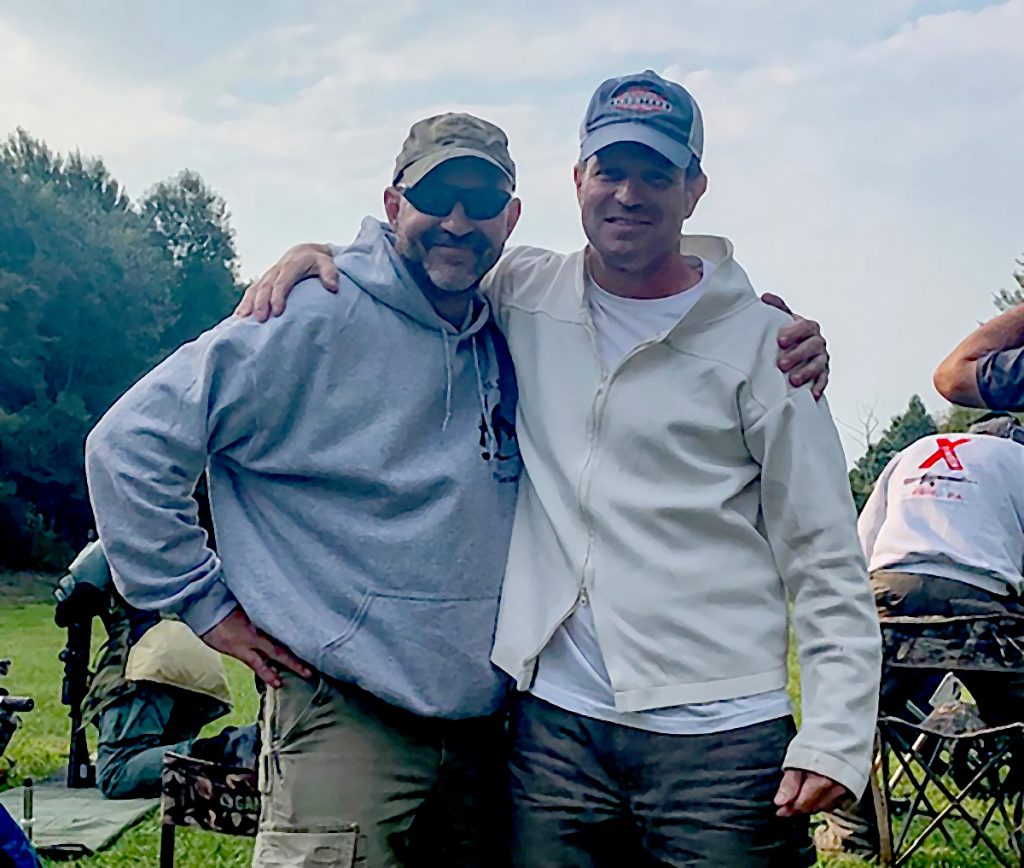
- Practice makes permanent, not perfect. Place yourself under the tutelage of shooters better than you, in all aspects of shooting.
- If offhand is your challenge, try building up your confidence in the rapids and 600 so much that you will go from saying, “Oh no, I shot an 88. Now I have to clean rapids and nail 600,” with a sense of exasperation to, “Okay, I shot an 88. Now I get to clean rapids and hammer 600!” with a touch of moxie in your step. A friend called this, “Backfilling offhand,” wherein you’ll lighten the focus and pressure to perform better on your feet and, counterintuitively, probably perform better on your feet.
- Be teachable! On the range, sitting around the huts and online, there are people ready and willing to assist in myriad ways. Most competitors are approachable, good people eager to share knowledge and encouragement. Ask. Listen. Take notes. Process. Glean and internalize what works for you.
- Have a growth mindset, not a fixed mindset (Read Carol Dweck’s Mindset: The New Psychology of Success). You’ll go from having a negative, judgmental reaction to bad shots to being intellectually curious why they happened, then go about constructively addressing the issue.
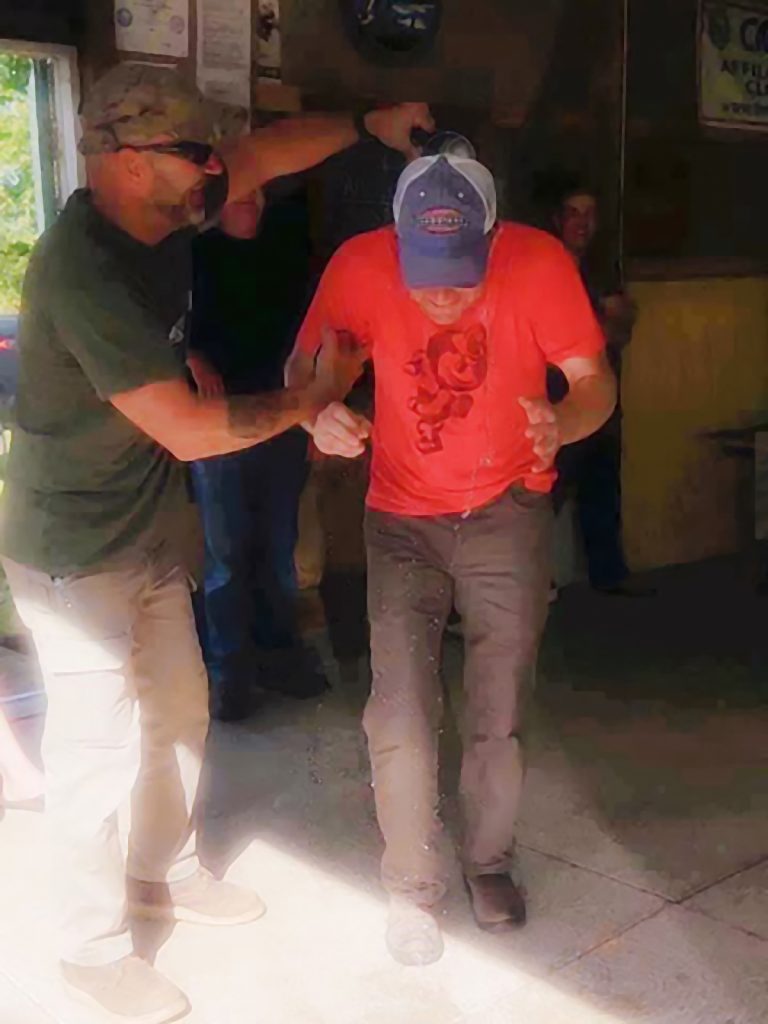
- If you’re in this sport as a hobby and over concerned about what your pals will think of you if you underperform and it adds to your match stress, here is some delightful news: most everyone doesn’t care if you underperform. How you perform has no correlation to your worth as a human being. None. Zero. Zip. Read that again. Most of us acknowledge this. Your friends wish the best for you, of course. They are rooting for you and happy for you when you shoot well, of course. If they respond otherwise when you shoot poorly that is a strong indication that they are not your friends, so it makes no sense to care what they think anyway.
- Be a good presence, on and off the range. What goes around comes around, so put good juju out there.
- Lastly, be open to encouragement! It is natural to shut ourselves off from being encouraged because we tend to focus on the yet-to-achieve things and not on progress made. You’re not alone in feeling discouragement, and you will not be alone savoring the rewarding feeling of success through perseverance. I went five long years between my first leg and my second leg, then in the span of 14 months earned 30 points and three hard legs. (By the way, in only one of my five legs I shot in the 90’s in offhand.)
Two days after talking to the squirrels at that cabin about selling all my equipment, I earned my second leg, which was also my first hard leg at the Buckeye Blossom – breaking a five-year drought. The day before, that same friend who commuted an hour to mentor me in cold weather texted this: “I see the future in ways you cannot.” We need people in our lives that point out what we are veiled from seeing ourselves, good and bad. Those people are your tribe.
And when I handed in my scorecard to national-champion highpower competitor Kim Rowe (a person I barely knew at the time) on that pivotal day in a pivotal weekend, she unwittingly brought it all together when she glanced at the score, smiled and said, “And that’s why you never give up.”
On the range, as in life, hold hard and favor center.
About Adam S. Jones:
Adam Jones, 48, of Palmyra, Pennsylvania, earned Distinguished Rifleman Badge #2548 in September 2021. His journey in marksmanship began with a large interest in history and a marginal interest in shooting – happy to blast milk jugs but unsure about competition.
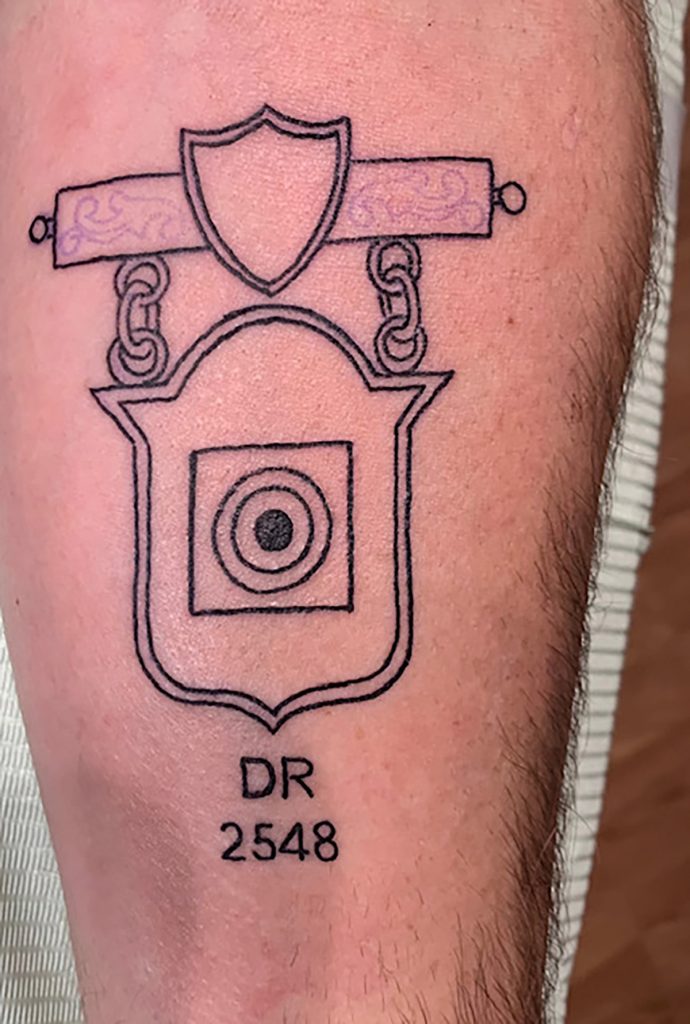
“The man who sold the M1 Garand to me said I should bring it to the local range that upcoming Saturday and shoot it in a match. I replied, ‘What is a match?” Jones explained. “I did take the M1 to the match that Saturday and, if memory serves, shot a 150-something in the 500 aggregate match. So began my interest in shooting in matches.”
Jones currently competes in the XTC 800 aggregate matches offered April through October at the New Holland Rifle and Pistol Association in New Holland, Pennsylvania, as well as 200-yard reduced matches at York Riflemen in York, Pennsylvania, and 100-yard reduced matches at Harrisburg Hunters and Anglers in Harrisburg, Pennsylvania. Throughout the year, he practices at a small club close to his home on its outdoor 100-yard range and indoor 50-foot smallbore range.
His first taste of full course matches was at the Camp Perry National Matches in 2013. From there, he added more marksmanship aspirations as his skills progressed.
“Earning the Distinguished Rifleman Badge became a goal in 2014 when I decided to start shooting full course matches,” he said. “After understanding what earning the badge requires, I considered it a worthy goal.”
Jones earned his first leg points in the spring of 2015 and, according to him, “the hook was set.” Seven years later, it finally happened – he earned his badge using his Service Rifle 7.7 twist Bartlein with CLE chamber, A2 handguard and buttstock with half wedge of lead, Wisconsin trigger and March 4.5 SR scope.
“And I wouldn’t shorten the long journey one day because between the first leg and the last leg, many good things entered my life,” he added.
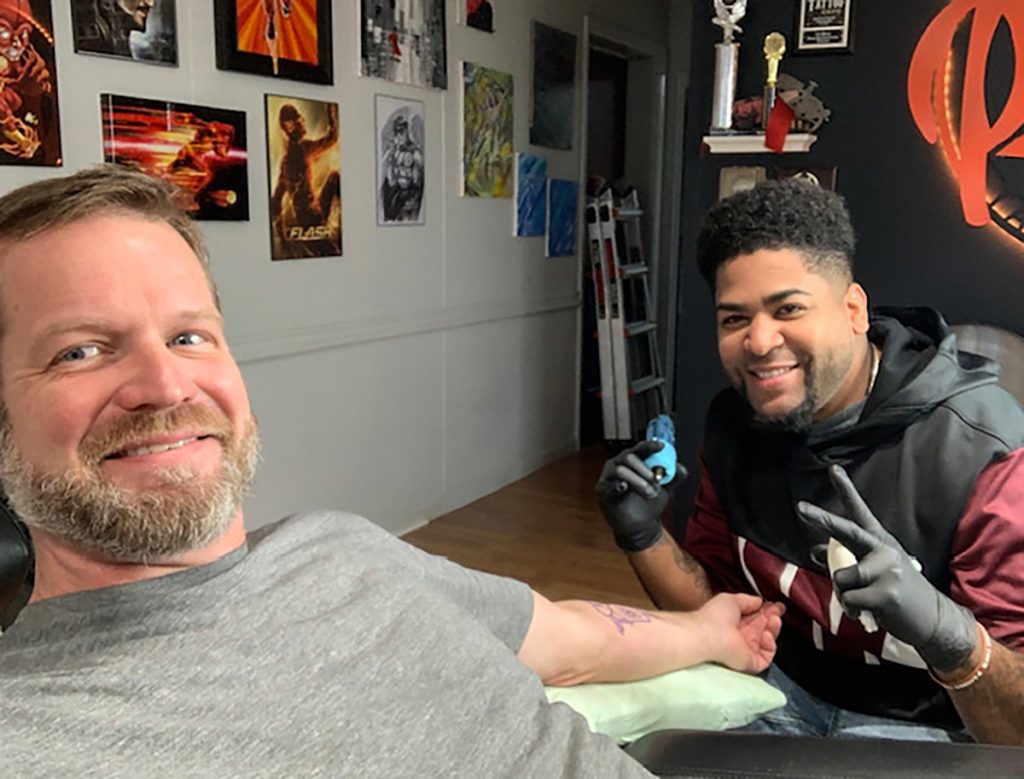
He was so proud of his badge that in December 2021, he found a way to always carry it with him – a constant reminder of his extensive, unwavering path to earning the honor.
“I am 48 and I never had a tattoo,” Jones said. “Given all the good things that entered my life over the past seven years pursuing the DR Badge, I finally knew what would make for a meaningful tattoo: the Badge!”
“Life-enriching friendships, a deepened relationship with my wife and daughter, cognitive health and anxiety management, being part of a healthy, uplifting community and being a happier person because of it all,” he went on. “There are a lot of good things and wonderful memories in that ink.”
About the Distinguished Rifleman Badge:
Distinguished Badges are the highest individual awards authorized by the U. S. Government for excellence in marksmanship competition. Badges are awarded by the Civilian Marksmanship Program (CMP) after an individual receives enough Excellence-In-Competition (EIC) points at qualifying matches (also referred to as leg point).
The Distinguished Rifleman Badge and the Distinguished Pistol Shot Badge were created by the War Department in 1884 and 1891, respectively, to recognize and reward members of the U.S. Army for Excellence-In-Competition with the service rifle and service pistol. Other Services of the Armed Forces adopted a similar program about the same time, and in 1926, civilians were authorized to participate in the program.
Currently, the CMP administers Distinguished Badges for:
- Service Rifle
- Service Pistol
- .22 Rimfire Pistol
- Junior Air Rifle
- International Shooter
- Smallbore Rifle
- Distinguished Marksman Badge (which allows competitors with a permanent disability or impairment that requires the use of adaptive firing to become eligible to earn EIC credit points)
- Distinguished Air Rifle and Air Pistol
- Distinguished Service Revolver Badge
Learn more about the Distinguished Badge program by visiting the CMP website at https://thecmp.org/competitions/distinguishedbadges/.
Congrats! I was apparently the 511th civilian to earn this, and at 19 years old I was told the second youngest at the time. I earned six points initially, then won three straight 10 point legs. I haven’t shot a highpower match in 20 years, but I still dream about shooting them. I’d bet money I could still clean a rapid sitting match given a little practice. But I would be afraid to shoot standing which used to be my strong point. Sucks to get old and broken.
Congratulations Adam. You are in good company. Keep this in mind however; In over 135 years of competitive rifle shooting and from hundreds of thousands of civilians who’ve tried to become distinguished; less than 2550 individuals ever achieved that feat. It’s extraordinary that in comparison; more people have succeeded at climbing Mt Everest then have succeeded at becoming distinguished in Rifle Shooting………………….
Steve,
Thank you for that perspective! (-:
Best.
Congratulations!
Thank you, Morgan. (-:
Outstanding Adam! Thanks for sharing your thoughts and experiences. All the best to you!
Thanks, Craig. And likewise. (-:
The journey is the destination – Ralph Waldo Emerson. Thank you Adam for reminding us of the valuable lessons of struggle and satisfaction and the joy they each can bring! Your journey and thoughtful recollections you share with us will be forever your legacy of giving all and giving back!
Kathy,
Thank you for the apt RWE quote! There is another from him that comes to mind in this context–I’ll have to look that one up.
Thank you for your kind words–I hope the good that was passed to me keeps going!
Best.
Congrats on a job well done from Ron Brown Slings. We take no credit for the tattoo, but are thrilled to see we played a minor part in your success.
Thanks, Ron and Linda.
Yes, that is the tail you made for the John Weller sling. I still have the leather key tabs as well. (-:
Best.
Wow – what a supremely thoughtful and superbly written article! Thank you so much for sharing your incredibly personal yet shared journey with your CMP community! Humbled and extra motivated by your story, I am.
CONGRATS on your significant accomplishment and most of all, for keeping at it!
Hi, Veronica.
Thank you for your kind words. I am happy you found encouragement in the article!
Best.
This article is “solid gold“, and very helpful!
I’m on my way to the same destination. ?
Thank you for the encouragement.
Dan,
I am happy you found encouragement in the article. Enjoy the ride to your destination; it is where you the good stuff lurks. (-:
Adam, thanks for sharing your insight on things that sustained you during your persuit. There’s a lot there to apply for those of us still chasing leg points. Like another shooter said once “keep fighting like that 3rd monkey trying to get on the arc”
Jim,
My pleasure.
Oh, and I am stealing that one about the third monkey! (-:
Good job Adam! …on the badge and the article
Thanks, Tom! Long time, no see. I hope all is well and hope to see you at Reade this year.
Let’s see the finished tattoo!
Hi, John.
I wanted a tattoo of an outline with clean lines so what you see in the article is the finished tattoo.
Pursuit of improved marksmanship represented by the image, however, is an unfinished work. (-:
I recall asking a friend in college if he was done with his term paper. “It is if I stop looking at it.”
That was before social media and comment sections. So here are some things I would include if scribbling this article again:
~~The Tragic Animal
Humans have the ability to look into the past and guess about the future. This can be helpful but we are bent toward wasting time regretting events in the past that we have no control over and obsessing about problems we may or may not have in the future that we also have no control over. What gets lost is the present moment that we do have control over. Regret for the past offers no entry into “learning from mistakes” and wringing our hands over imaginary negative events in the future (cognitive hobgoblins) creates anxiety. Bad, bad, annnnd bad.
The bad shot is in the past. Leave it there. Be curious why it occurred and learn what to do in the future. There are shots left to make. Leave them in the future. The only shot you have control over is the one in the chamber waiting its turn to go downrange. It is an aggregate match which means you will be between past shots and future shots 48 out of 50 times.
~Gratitude: at local, regional, or national matches there are many people that expend tremendous time and energy to provide us the opportunity to walk onto a range, punch paper in a safe and fun venue, and go home with stories to tell. Be grateful for this and express gratitude to match directors, range officers, pit officers, volunteers, and everyone in between. If you are on a team thank the captain and organizers. Doing so broadens your perspective and heightens your appreciation, and this will elevate your motivation to practice harder and better to take better advantage of opportunities that are a result of their labors.
~Shoulda, Coulda, Woulda
When reflecting on missteps and mistakes in the past, replace “should have” elicits regret, guilt, and handwringing that does no good for corrective action in the future. You’re more likely to dwell on “Do Not’s”
“Could have” elicits curiosity and engages creative thought processes that allow for constructive corrective steps forward. You’ll be more likely to actively think of the “Do’s” for future shots. “I could have stopped and started the shot routine all over again when I was on target too long.”
When planning for the future, replace “should” with “could.” “Should” puts us in a mindset of chores, must-do’s, and laborious necessities. That’s negative. “Could” puts us more in a mindset of creativity, curiosity, and thinking of interesting tactics for problem-solving. That’s all fun stuff for the brain.
That is a great read. Thank you for publishing stories like this.
Well said!
Nicely done
“ Like a boss “